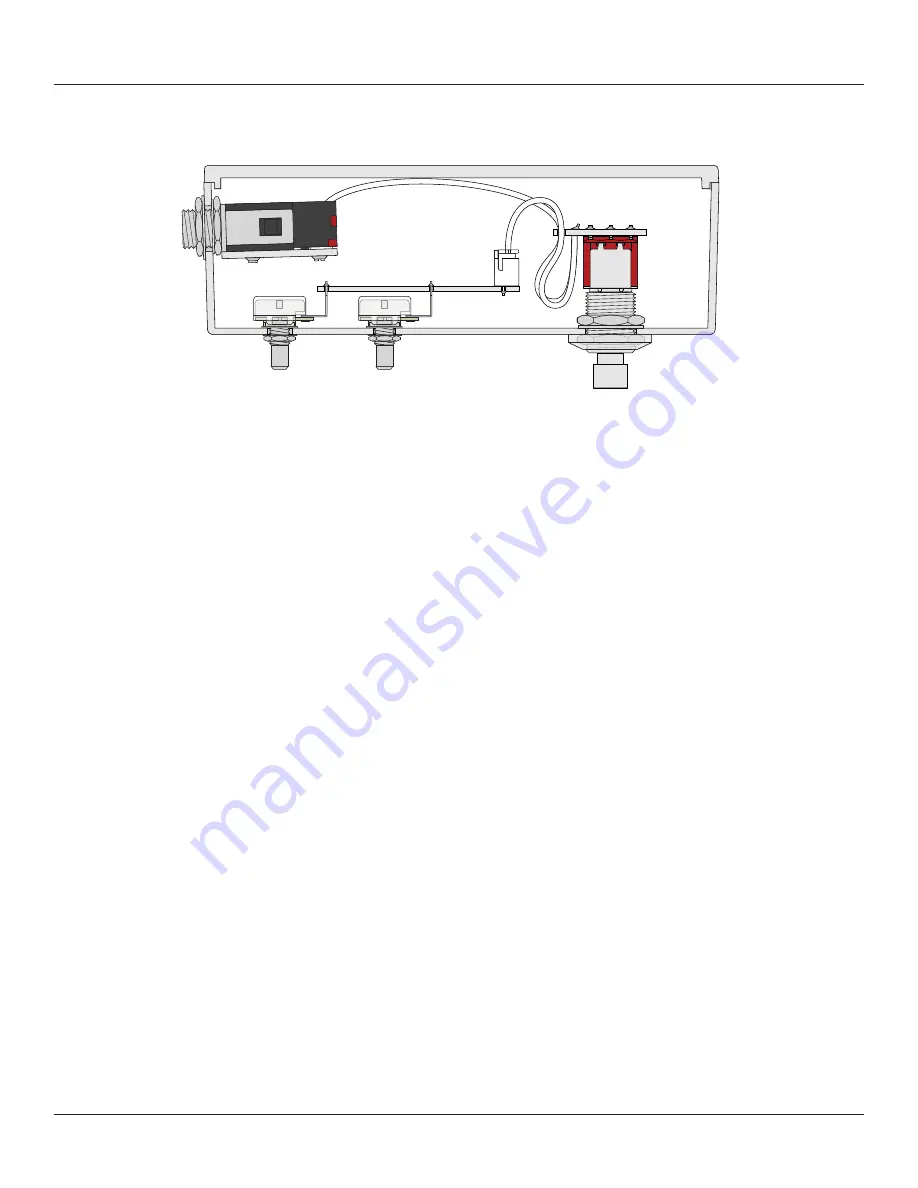
PHOBOS GERMANIUM FUZZ
25
FINAL ASSEMBLY & BIASING
After everything is in place, just plug the 3 wire assemblies into their respective headers and make sure
they’re secure. That’s it! Here is a cross-section of the inside of the completed pedal.
At this point, you have completed the full circuit as far as the electrons are concerned, but we still need
to bias the transistors before it will sound right.
Biasing
The trimmers allow for easy biasing of the transistors without having to swap out resistors.
As a starting point, set the two bias trimmers to around 90% rotation. Then, with a multimeter, touch the
black and red leads to the pads marked “Q1/2 TEST”. This is equivalent to the shared collector of Q1/2.
Rotate the trimmer until the multimeter reads
-3.5V
(either positive or negative depending on which
lead is touching which pad).
Next, touch the multimeter leads to the pads marked “Q3 TEST”. This is equivalent to the collector of
Q3. Rotate the trimmer until you read
-2V
on the Q3 collector (again, either positive or negative).
Then, with the black lead touching ground, touch each leg of each of the transistors and see how they
line up with these target voltages.
•
Q1:
Collector -3.5v, Base -1.5v, Emitter -1.4v
•
Q2:
Collector -3.5v, Base -1.5v, Emitter -1.4v
•
Q3:
Collector -2v, Base -0.05v, Emitter 0v
The -3.5v target voltage of Q1/Q2 is just a baseline. Some have reported great sounds with collector
voltages as high as -6.5v. Use your ears and don’t be afraid to stray from what’s listed.
Testing
Plug in a 9-volt supply and test it out with a guitar and an amplifier.
Test the bypass switch a few times, then start turning the controls and see if everything sounds OK. If it
works, great! If not, don’t be discouraged. See page 29 for troubleshooting info.





















